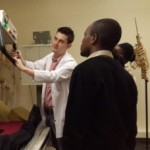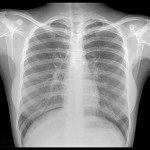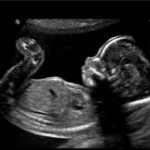The Department of Radiography is a dynamic department within the Faculty of Health Sciences at the Durban University of Technology. It caters for the four main disciplines of radiography – Diagnostic (D), Nuclear Medicine (NM), Radiotherapy (T) and Ultrasound (US).
Radiography Handbook
Radiography Staff
Radiography Clinic
Vision
A Global Leader in Transformative Radiography Education.
Mission
“Develop Medical Imaging and Therapeutic Professionals”
Through excellence in:
- Student-centred teaching and learning.
- Technology transfer and applied research.
- Entrepreneurship and engagement.
Values
Professionalism: To work within ethical, legal and regulatory standards. To develop and maintain professional expertise and good work ethic.
Integrity: To conduct ourselves with strong moral principles. To be honest, transparent and authentic. To do what is ethical and just.
Ubuntu: To treat people with respect, fairness, courtesy, politeness and kindness.
Collaboration: To work together as effective team players. To create more than the sum of the parts
Accountability: To accept responsibility for one’s actions.
Programmes offered by the department and Entrance Requirements
Bachelor of Health Sciences in Radiography
Master of Health Sciences: Radiography
Doctor of Radiography
Phasing out programmes (Note: Teach-out date 31 December 2019)
National Diploma Radiography: Diagnostic / Nuclear Medicine / Therapy / Ultrasound
Bachelor of Technology Radiography: Diagnostic / Nuclear Medicine / Therapy / Ultrasound
Diagnostic Radiography
Radiography is the creation of radiographs; photographs made by exposing a photographic film or other image receptor to X-rays. Since X-rays penetrate solid objects, but are slightly attenuated by them, the picture resulting from the exposure reveals the internal structure of the object.
A radiographer should be able to apply scientific knowledge and technologies, applicable to the clinical presentation, for the production of optimum image quality in a chosen elective; be able to plan, develop and apply total quality management with consideration for equipment, human resources, quality assurance and health care needs; be able to manage a radiographic service; be able to apply research skills and principles, and be able to apply advanced ethical principles to daily practice.
A diagnostic radiographer takes radiographs/films of parts of the body on patients who are referred by a physician or doctor for the diagnosis of either trauma (injury) or disease. The radiographer must be competent in the operation of various types of diagnostic X-ray equipment and in caring for the patient. A radiographer does not make diagnoses as this falls within the scope of a qualified doctor such as a physician, surgeon or radiologist. A radiologist is a qualified doctor who is a specialist in the diagnosis of illnesses which can be demonstrated on X-ray films (radiographs) or other medical imaging systems.
Nuclear Medicine
This is a medical specialty that uses small amounts of radioactive substances to show the function of a body organ, as well as its anatomy. It has diagnostic as well as therapeutic applications. Nuclear medicine technologists administer radiopharmaceuticals to patients and then monitor the characteristics and functions of tissues or organs in which the drugs localize, with the use of specialized equipment. The radiographers also perform a number of laboratory related procedures.
They should be able to apply scientific skills and technologies to the clinical presentation for the production of optimum image quality in the specialised fields and research units of Nuclear Medicine. They need to also plan, develop and manage a nuclear medicine department as well as apply strategic management and administration to ensure a quality Nuclear Medicine service.
A nuclear medicine radiographer is trained in imaging and laboratory procedures in order to determine the physiological function of human beings using radionuclides or radio pharmaceuticals at the request of a qualified medical practitioner. He or she must be competent in the operation of various types of nuclear medicine equipment, laboratory procedures and care of the patient. A nuclear medicine radiographer does not make diagnoses, as these fall within the scope of a qualified doctor or specialist.
Radiotherapy
Treatment of disease with radiation, especially by selective irradiation with x-rays or other ionizing radiation and by ingestion of radioisotopes. Radiotherapy radiographers work closely with doctors, nurses, physicists and other members of the oncology team to treat patients with cancer. They deliver doses of X-rays and other ionising radiation to patients, many of whom are suffering from various forms of cancer. They locate the area to be treated and work out the exact dosage required with doctors and medical physicists.
Radiotherapy radiographers may be involved in the care of the cancer patient from the initial referral clinic stage, where pre-treatment information is given, through the planning process, treatment and eventually post-treatment review (follow-up) stages. They should also be able to function in the oncology team in the development and review of protocols/clinical trials in order to maintain standards of management of oncology patients and control of the holistic radiation oncology care of the patient in order to offer an optimal service. An application of management skills in a supervisory capacity of the radiotherapy division and implementing research principles with the promotion of a research climate is required.
A radiotherapy radiographer administers treatment using ionising radiation at the request of a radiotherapist. He or she is responsible for maintaining a patient’s radiation dose records, and care of the patient including giving the patient advice and instruction in diet, skin care and health. The radiotherapy radiographer is also responsible for localisation and radiation planning of tumours, the implementation of radiation protection measures, care and use of radiation equipment, and the storage and handling of radioactive isotopes.
Diagnostic Sonography / Ultrasound
Ultrasound uses high-frequency sound waves and a computer to create images of blood vessels, tissues, and organs. An ultrasonographer is a radiographer who is qualified to perform abdominal and transvaginal ultrasound to determine the size, shape and dimensions of pelvic organs, ovarian follicle production, and the existence of tumors, enlargements or inflammations. Doppler and 3-D ultrasound help identify pathologies such as gallstones, kidney stones, cancers, hematomas and tumors.
An ultrasonographer provides vital information to the physician, giving data on anatomy and pathology through images formed by the use of high frequency sound waves. These images are then interpreted by the radiologist in order to provide diagnostic information. An ultrasonographer should also be able to understand, analyse and adapt current developments in ultrasound imaging for the implementation and management of protocols; plan, develop and manage an ultrasound department with consideration for human resources, equipment, quality assurance and patient requirements; and apply research principles for the development of a research climate and publications.
Ultrasound radiographers produce images of various parts of the body using ultrasound for diagnostic purposes at the request of a medical practitioner. An ultrasound radiographer must operate various types of diagnostic ultrasound equipment and care for patients competently. He or she does not make a diagnosis, as this falls within the scope of a qualified doctor such as a radiologist, obstetrician, surgeon or physician. The ultrasound radiographer reports his or her findings.
Useful Links
- Health Professions Council of South Africa
- The Society of Radiographers of South Africa
- The International Society of Radiographers and Radiological Technologists
- World Health Organisation
- Society of Nuclear Medicine
Contact Information
 |
Head of Department: Dr T.E Khoza Tel: 031 373 3092 Email: thandokuhleK@dut.ac.za Location: Ritson Campus |
 |
Secretary: Ms ZN Gumede Tel: 031 373 2450 Fax: 086 550 8774 Email: zamangunig@dut.ac.za Location: DH1102, Gate 6, Steve Biko Rd Campus: Ritson Campus |













